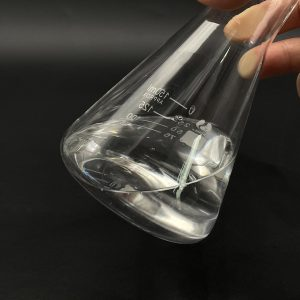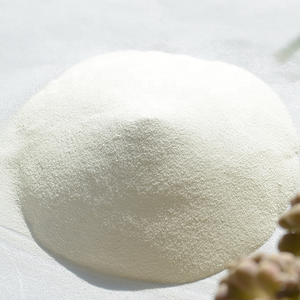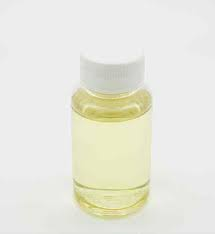1. Introduction
Ever read the back of your shampoo bottle and seen ‘sodium lauryl sulfate‘ listed near the top? You’re not alone. This ingredient—often abbreviated as SLS or referred to as sodium dodecyl sulfate—shows up in everything from toothpaste to laundry detergent. But what exactly is it, and why is it so widely used?

In short, sodium lauryl sulfate is a powerful surfactant. That means it helps water mix with oil and dirt so they can be rinsed away easily. But there’s more to this common compound than meets the eye. Let’s break it down.
2. What Is a Surfactant?
The meaning of surfactant is simple: it’s a surface-active agent. Surfactants lower the surface tension between two substances—like water and grease—making it easier to clean, foam, or spread.
Surfactants fall into four main categories based on their ionic charge:
- Anionic surfactants (negatively charged, like sodium lauryl sulfate)
- Cationic surfactants (positively charged, like cetyl trimethyl ammonium bromide or CTAB)
- Non ionic surfactant (no charge, like polysorbate 80 or decyl glucoside)
- Amphoteric surfactants (can be both positive and negative, like cocamidopropyl betaine)
Sodium lauryl sulfate is one of the most common anionic surfactants due to its strong cleansing and foaming power.
3. Sodium Lauryl Sulfate vs. Similar Ingredients
People often confuse sodium lauryl sulfate (SLS) with sodium laureth sulfate (also called sodium lauryl ether sulfate or sodium lauryl ether sulphate). Though both are anionic surfactants, they’re chemically different.
SLS (or sls sodium lauryl sulfate) is derived from lauryl alcohol and is known for its aggressive cleansing action. Sodium laureth sulfate (sometimes labeled as laureth sulphate or sulphate laureth sulfate) is ethoxylated—meaning it’s been treated with ethylene oxide—which makes it milder and less irritating.

Other related compounds include ammonium lauryl sulfate (also known as ammonium dodecyl sulfate) and sodium lauroyl sarcosinate—a gentler anionic surfactant often used in sensitive-skin formulas.
4. Common Uses of Sodium Lauryl Sulfate
Sodium lauryl sulfate for sale is widely available because of its versatility. You’ll find it in:
- Shampoos and body washes (for rich lather)
- Toothpastes (as a foaming agent)
- Industrial cleaners (for heavy-duty degreasing)
- Herbicides and weed killers (as a surfactant for herbicides to help the solution stick to plant leaves)
In agriculture, it can act as a lawn wetting agent or wetting agent for grass, helping water and nutrients penetrate soil more effectively.
It’s also used alongside other surfactants like lignin sulfonate or methylated seed oil to boost performance in pesticide formulations.
5. Safety and Controversy
Despite its popularity, sodium lauryl sulfate has sparked debate. Some claim it’s harsh or irritating—especially for people with sensitive skin or conditions like eczema.

However, regulatory bodies like the FDA and EU Cosmetic Regulation consider it safe when used in rinse-off products at typical concentrations (usually under 1–2%).
Note: SLS is not the same as fluoro surfactants or copper 1 bromide—those are entirely different chemical classes used in specialized industrial applications.
6. Gentler Alternatives to SLS
If you’re looking to avoid SLS, many brands now use milder surfactants. Popular options include:
- Alkyl polyglucoside (a bio surfactant derived from sugar and coconut oil)
- Coco glucoside and decyl glucoside (nonionic surfactants that are biodegradable and gentle)
- Cocamidopropyl betaine (also called coco betaine or amidopropyl betaine)—an amphoteric surfactant that boosts foam without irritation
- Sodium cocoyl isethionate and sodium lauroyl methyl isethionate—luxurious, skin-friendly cleansers often found in solid bars
- Sodium coco sulfate (sometimes labeled as coco sodium sulfate), a milder cousin of SLS
These alternatives are often combined to create effective yet gentle cleansing systems, especially in ‘SLS-free’ shampoos and baby products.
7. Industrial and Specialty Surfactants
Beyond personal care, surfactants play key roles in labs and manufacturing. For example:
- Polysorbate 80 (also known as Span80 when in sorbitan form) is a nonionic surfactant used in food and pharmaceuticals
- Pluronic 127 and Poloxamer 188 are block copolymers used in drug delivery
- Sodium deoxycholate and sodium oleate are bile acid–based surfactants used in biochemistry
- Cetyltrimethylammonium bromide (CTAB) is a cationic surfactant used in DNA extraction
Companies like Rohit Surfactants Private Limited supply industrial-grade surfactants, including sodium dodecylbenzene sulfonate and ethoxylated alcohols, for use in detergents and agrochemicals.
8. Final Thoughts
Sodium lauryl sulfate (also known as na lauryl sulfate or natrium lauryl sulfate in some regions) remains a workhorse in cleaning and personal care thanks to its effectiveness and low cost. While it’s not inherently dangerous, those with sensitive skin may prefer gentler options like alkyl polyglucosides or cocamidopropyl.
Understanding the difference between anionic, cationic, nonionic, and amphoteric surfactants helps you make smarter choices—whether you’re picking a shampoo or formulating a weed killer. After all, not all sulfates are created equal, and ‘sls sulfate’ isn’t the only path to clean.
Our Website founded on October 17, 2012, is a high-tech enterprise committed to the research and development, production, processing, sales and technical services of ceramic relative materials such as What. Our products includes but not limited to Boron Carbide Ceramic Products, Boron Nitride Ceramic Products, Silicon Carbide Ceramic Products, Silicon Nitride Ceramic Products, Zirconium Dioxide Ceramic Products, etc. If you are interested, please feel free to contact us.


